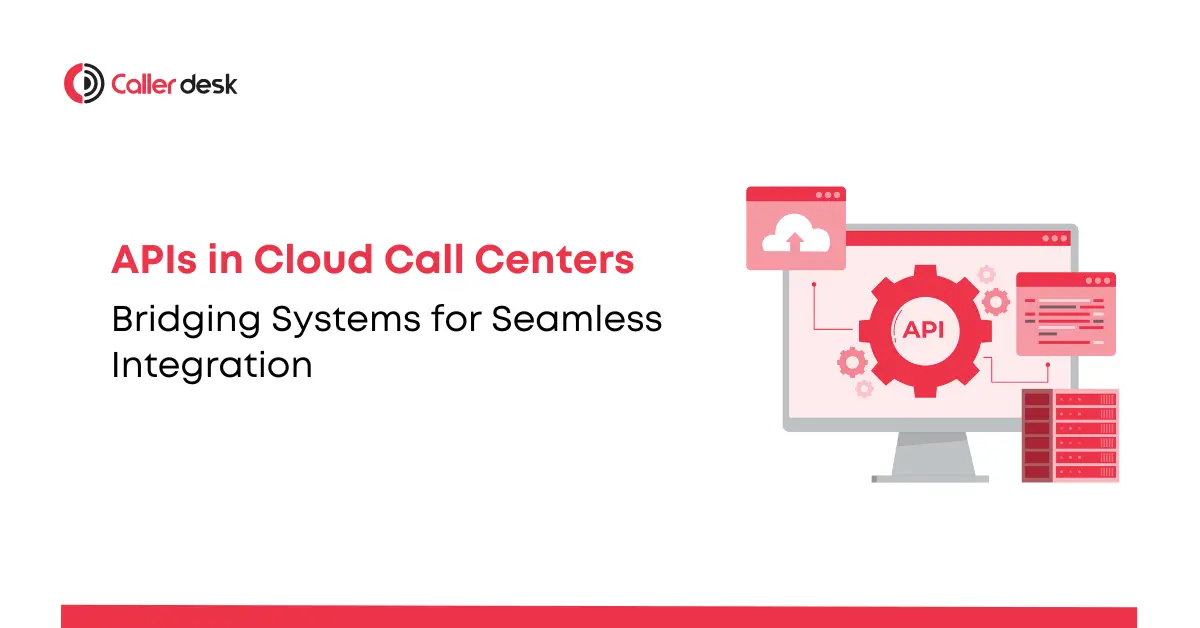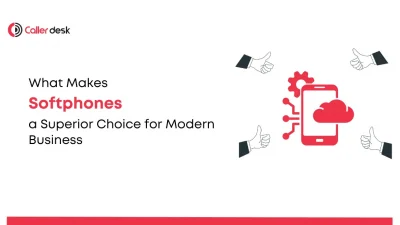Effective communication is the cornerstone of any successful business, especially in an era where customer expectations are at an all-time high. Cloud call centers have emerged as dynamic hubs for managing customer interactions across multiple channels, including phone calls, emails, live chats, and social media. However, managing these diverse communication streams efficiently can be challenging without the right tools.
This is where APIs (Application Programming Interfaces) play a pivotal role. APIs act as digital bridges that seamlessly connect different software systems, enabling them to exchange data and functionalities effortlessly. By integrating APIs into cloud call centers, businesses can enhance operational efficiency, provide personalized customer experiences, and adapt to the evolving demands of modern communication.
In this detailed guide, we’ll explore the transformative role of APIs in cloud call centers, their various types, real-world applications, and the compelling benefits they offer.
What Are APIs in Cloud Call Centers?
At their core, APIs allow software applications to interact and share information. In cloud call centers, they act as connectors between the call center platform and other essential tools like CRMs (Customer Relationship Management systems), marketing platforms, ticketing systems, and analytics dashboards.
For example:
- Without APIs: Agents manually switch between applications to retrieve customer data, leading to delays and potential errors.
- With APIs: Customer data automatically populates the call interface, allowing agents to focus on resolving customer queries rather than searching for information.
How APIs Work
APIs work by defining a set of protocols and rules that allow two software applications to communicate. They enable data transfer and synchronization in real time, ensuring that all integrated systems stay updated without manual intervention.
Types of Call Center APIs
Different APIs serve various functions within a cloud call center. Here’s a breakdown of the key types and how they contribute to streamlined operations:
1. Call Handling APIs
- Purpose: Manage essential call functions such as routing, recording, and transferring calls.
- Real-World Example: CallerDesk’s call handling APIs allow automatic routing of high-priority calls to senior agents, ensuring faster resolution for critical customer issues.
2. Telephony APIs
- Purpose: Enable essential telecommunication features like call initiation, management, and termination.
- Use Case: Empower agents with click-to-call functionality directly from a CRM, simplifying the process of reaching out to customers.
3. Integration APIs
- Purpose: Connect your call center platform with external tools like ticketing systems, email platforms, or customer feedback tools.
- Real-World Application: Syncing call center data with marketing automation tools to trigger personalized follow-ups based on call outcomes.
4. Reporting APIs
- Purpose: Generate detailed analytics reports for performance monitoring and informed decision-making.
- Example: Track KPIs such as first-call resolution rates, average handling time, and agent productivity using CallerDesk’s advanced reporting APIs.
5. Speech Recognition APIs
- Purpose: Convert voice to text for transcription, sentiment analysis, or compliance monitoring.
- Use Case: Analyze customer sentiments during calls to identify dissatisfaction trends and proactively address recurring issues.
6. Chat and Messaging APIs
- Purpose: Integrate communication channels like live chat, SMS, or WhatsApp with your call center.
- Example: Use chat APIs to send automated appointment reminders via SMS after a phone call.
Key Benefits of APIs in Cloud Call Centers
APIs are more than just connectors—they are enablers of efficiency, personalization, and scalability. Let’s dive into the tangible benefits they bring to cloud call centers:
1. Unified Workflows
APIs eliminate the need for agents to juggle multiple systems. By consolidating tools into a single interface, APIs reduce operational complexity and boost efficiency.
- Example: CallerDesk APIs integrate seamlessly with CRMs, allowing agents to view customer history, call logs, and case updates in one place.
2. Enhanced Customer Experience
APIs empower agents with real-time access to customer data, enabling them to deliver faster, more personalized support.
- Example: With CallerDesk’s CRM integration, agents can greet customers by name, reference past interactions, and provide tailored solutions, creating a memorable experience.
3. Cost Savings
Building custom integrations from scratch can be expensive. APIs offer a cost-effective alternative by connecting existing tools and leveraging their capabilities.
- Example: Instead of investing in a custom ticketing system, integrate your existing platform with CallerDesk’s API to achieve the same functionality.
4. Scalability and Flexibility
As businesses grow, their communication needs evolve. APIs make it easy to add new tools, users, or features without disrupting existing operations.
- Example: Scale up during peak seasons by integrating temporary support channels through APIs, ensuring your team can handle increased call volumes.
5. Data-Driven Insights
APIs facilitate the collection of granular data, enabling managers to make informed decisions based on real-time analytics.
- Example: Use CallerDesk’s analytics APIs to identify trends in call volumes, peak interaction times, and agent performance metrics.
Real-World Applications of APIs in Cloud Call Centers
1. Automating Routine Tasks
APIs can automate repetitive tasks, such as logging call data into CRMs or creating support tickets, saving agents valuable time.
2. Personalized Marketing Campaigns
By integrating call center data with marketing platforms, APIs can trigger targeted campaigns based on customer interactions.
3. Advanced Call Routing
Leverage data from CRMs to route calls to the most appropriate agent based on customer preferences, ensuring higher satisfaction rates.
4. Sentiment Analysis for Quality Monitoring
Analyze recorded conversations using speech recognition APIs to evaluate customer sentiment and identify training opportunities for agents.
Why Choose CallerDesk for API-Driven Call Centers?
CallerDesk stands out for its robust API ecosystem designed to simplify call center operations while enhancing customer experiences.
Unique Features of CallerDesk APIs:
- Seamless CRM Integration: Connect with tools like Salesforce, HubSpot, and Zendesk for a unified workflow.
- Real-Time Data Access: Enable agents to access updated customer information during calls.
- Intelligent Routing: Use AI-driven algorithms to direct calls to the most suitable agents.
- Secure Communication: Protect sensitive customer data with end-to-end encryption and industry-standard security protocols.
- Scalability: Easily add new users or channels as your business grows.
Conclusion
APIs are revolutionizing cloud call centers by bridging the gap between disparate systems, enhancing efficiency, and delivering exceptional customer experiences. They streamline operations, enable scalability, and empower agents with the tools they need to excel.
With CallerDesk’s API-enabled platform, your call center can achieve new heights of productivity and customer satisfaction. Whether you need seamless CRM integration, real-time analytics, or advanced call routing, CallerDesk offers solutions that cater to your unique business needs.
Take the First Step:
Ready to unlock the potential of APIs in your cloud call center? Schedule a free demo with CallerDesk today and experience the power of seamless integration and advanced communication.
Frequently Asked Questions
1. What is an API in the context of a cloud call center?
An API (Application Programming Interface) is a tool that allows different software systems to communicate and share data seamlessly. In cloud call centers, APIs connect communication platforms with tools like CRMs, analytics, and ticketing systems to streamline operations.
2. How do APIs improve customer experience in call centers?
APIs provide agents with instant access to customer data, allowing them to offer personalized service, resolve issues faster, and maintain a consistent customer experience across multiple communication channels.
3. What are the common types of APIs used in cloud call centers?
Key types of APIs include:
Call Handling APIs: Manage call routing and recording.
Telephony APIs: Enable features like click-to-call.
Integration APIs: Connect call center software with external platforms.
Analytics APIs: Provide insights into call center performance.
Messaging APIs: Integrate SMS and chat capabilities.
4. How can APIs help call centers save costs?
APIs eliminate the need for costly custom software development by allowing call centers to integrate pre-built tools and features. They also automate routine tasks, reducing the time and resources needed for manual operations.
5. Why should I choose CallerDesk for API-driven solutions?
CallerDesk offers robust API integrations, enabling seamless communication between your call center and external tools like CRMs and analytics platforms. With features like advanced reporting, omnichannel support, and scalability, CallerDesk ensures your call center operates efficiently and delivers superior customer experiences.





